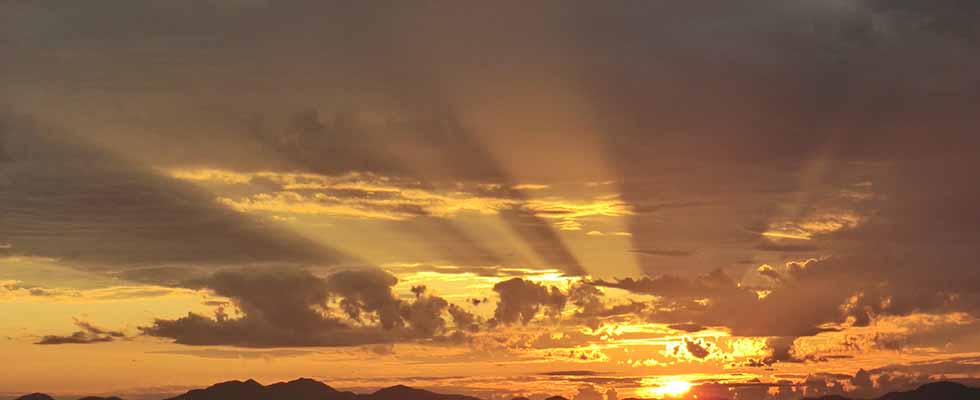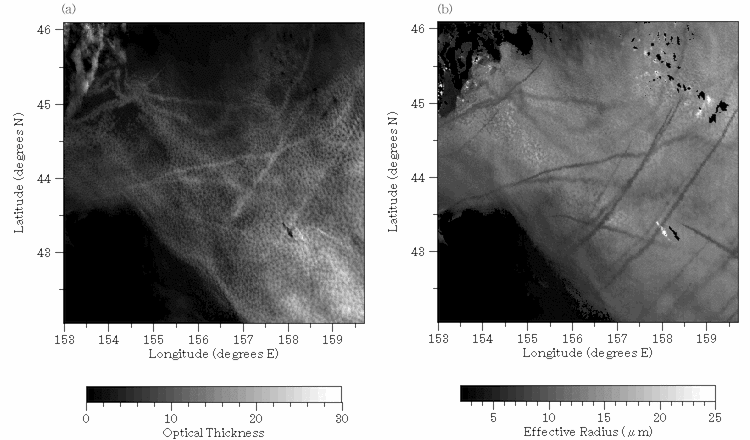An increase of anthropogenic aerosols from air pollution and biomass burning may change the distribution of cloud and precipitation and influence global and regional climate. Several types of aerosol particles can act as cloud condensation nuclei and increase the number of cloud particles, and mean particles size decreases, increasing the cloud reflectivity. Also, it is suggested that the aerosols may suppress precipitation and make the lifetime of cloud longer. However, quantitative estimate of these effects is highly uncertain, which is one of the most important subject to make the future climate prediction more certain.
Figure 1 presents an example of satellite retrieved cloud optical depth and effective particle radius of a stratus cloud over the Northern Pacific. Several streaks are shown, which correspond to tracks of ship cruise. Gases emitted by ship made aerosols, which reduces mean particle size, increasing cloud optical depth. The optically thick cloud has high reflectivity, reducing downward solar radiation at surface. This is an interesting case of evidence of cloud influenced by human activity.
As in this case, satellite observations provide useful data to study climatic impacts of cloud and aerosols over wide area. In our laboratory, we are aiming at reduction of uncertainties of aerosol effects on climate by the use of satellite- and ground-based observation data.
Fig. 1. Cloud optical thickness (left) and effective particle radius (right) retrieved from data of AVHRR onboard the NOAA satellite. A stratus cloud is shown over the Northern Pacific, at 21 UTC, July 29, 1994.

